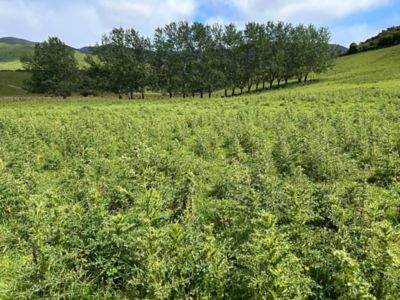The Growing Weed Challenge
Weeds have long been a challenge at Mt Hutt Station, with Californian thistle, nodding thistle, and ragwort being the primary culprits. Nodding thistle seeds are carried by the wind from north of the station, while Californian thistle thrives in the heavier soils, particularly in areas prone to pugging by cattle and deer. Ragwort is a persistent issue in the southern block, where it spreads unchecked due to cattle and deer avoiding it as forage.
Historically, when the station was predominantly sheep-run, weed pressure was lower. However, as management has shifted toward deer and dairy farming, the problem has intensified. Bruce is acutely aware of the risks posed by invasive weeds, knowing they can quickly spiral out of control and significantly reduce available grazing land.
A Strategic Weed Control Program
To combat the weed challenge, Bruce employs a targeted approach to weed control. He uses boom spraying to treat the worst-affected paddocks, adjusting his strategy each season based on where new seed has blown in. Recognizing that deer do not thrive in paddocks overrun with thistles or ragwort, proactive control is a priority.






